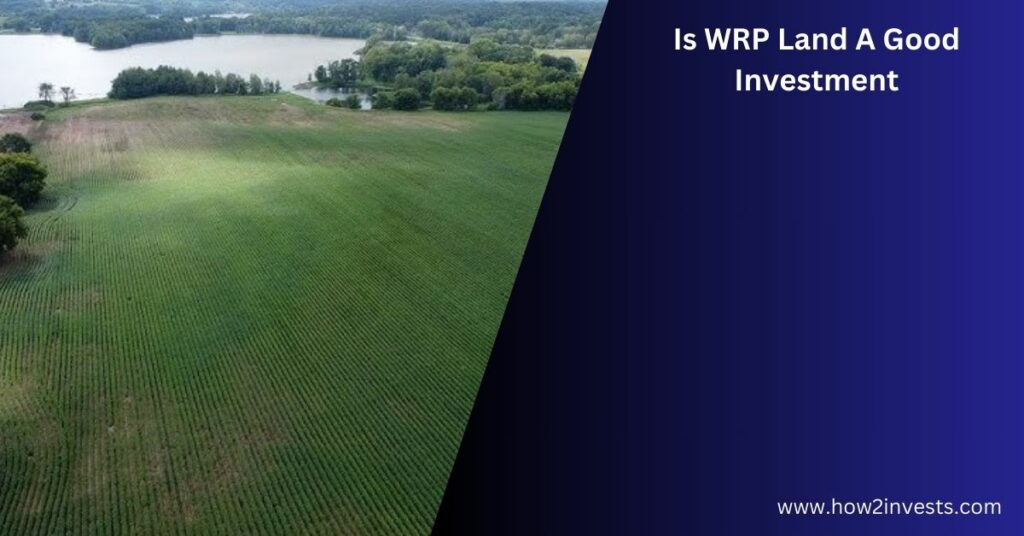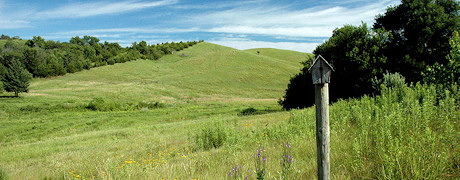Is WRP Land A Good Investment? Experts Review

Investing in land can be a prudent and rewarding financial decision. However, not all land investments are created equal, and it’s crucial to thoroughly research and assess the potential returns and risks associated with a specific type of land before making a commitment. One type of land investment that has gained attention in recent years is WRP land.
In this article, we’ll explore what WRP land is, its potential benefits, and some factors to consider when evaluating whether it’s a good investment for you.
Table of Contents
What is WRP Land?
WRP stands for Wetland Reserve Program, which is a voluntary program offered by the United States Department of Agriculture (USDA) through the Natural Resources Conservation Service (NRCS). The primary goal of the WRP is to protect and restore wetlands and associated habitats on private lands.

Landowners who enroll in the program agree to place their property under a conservation easement, restricting future development and land use changes in exchange for financial incentives.
Potential Benefits of Investing in WRP Land:

1. Conservation Impact:
One of the most significant benefits of investing in WRP land is the positive impact on the environment. By participating in the program, landowners contribute to the preservation and restoration of wetlands, which are essential for biodiversity, flood control, and water quality.
This can be a source of personal satisfaction for those who value environmental conservation.
2. Tax Incentives:
Investors in WRP land can benefit from various tax incentives. These incentives can include deductions for the fair market value of the donated easement, reduced property taxes, and potential estate tax benefits. Consultation with a tax advisor is essential to understand the specific tax advantages available to you.
3. Stable Returns:
While WRP land may not offer the same level of cash flow as some other types of real estate investments, it can provide stable returns over the long term. Lease agreements with hunting clubs, recreational enthusiasts, or government agencies can generate a consistent income stream.
4. Reduced Risk:
WRP land investments tend to be less susceptible to economic downturns compared to other types of real estate investments. Since the land’s primary use is conservation, it is less subject to market volatility and economic cycles.
Factors to Consider:

1. Location:
As with any real estate investment, location plays a crucial role. The desirability of WRP land can vary greatly depending on the region and its potential for recreational use, hunting, or wildlife viewing.
2. Market Demand:
Assess the demand for recreational and conservation-focused land in your target area. A strong demand can lead to higher lease rates and better investment returns.
3. Management:
Proper land management is essential to maximize the potential of WRP land. Regular maintenance and habitat improvements may be necessary to attract lessees and maintain the land’s conservation value.
4. Regulations:
Understand the regulations and restrictions associated with WRP land, including the terms of the conservation easement. Compliance with these regulations is crucial to maintain eligibility for tax incentives and program benefits.
Environmental and Conservation Considerations:
Investing in WRP land carries significant environmental and conservation responsibilities. Here are some key details to consider:

Easement Restrictions: Understand the specific restrictions placed on the land by the conservation easement. These restrictions may limit activities like farming, development, and land alterations.
Long-Term Commitment: Enrolling in WRP typically involves a long-term commitment, often lasting decades or even in perpetuity. Ensure you are comfortable with this level of commitment and its implications on land use.
Ecological Benefits: Research the ecological value of the wetlands on your property. Are there endangered species or critical habitats that enhance its conservation significance?
Maintenance Costs: Assess the ongoing maintenance costs required to keep the land in compliance with the conservation easement. This includes habitat restoration, invasive species control, and erosion prevention.
Market Analysis and Demand:
To make an informed investment decision, you must gauge the market dynamics and demand for WRP land:

Market Trends: Study past and current market trends in your chosen area. Has there been increasing demand for recreational and conservation-focused land?
Competition: Analyze the level of competition in the market. Determine how many similar properties are available for lease or sale in your region.
Lessee Relationships: Build connections with potential lessees or land management companies who can help you understand the demand for WRP land in your area.
Financial Considerations and Return on Investment (ROI):
Assessing the financial viability of your WRP land investment is vital:

Lease Income: Estimate potential lease income by researching prevailing rates for hunting, fishing, and recreational use in your area.
Tax Implications: Consult a tax advisor to fully understand the tax implications of your investment, including income tax, property tax, and potential deductions.
Appreciation: Consider the potential for land appreciation over time. While WRP land may not appreciate as quickly as other investments, it can still gain value.
Land Management and Habitat Enhancement:
Effective land management is crucial for the success of your WRP investment:

Wildlife Habitat: Implement habitat improvement projects to enhance the attractiveness of your land to lessees and increase its ecological value.
Water Management: Proper water management is often essential for wetland restoration. This may involve creating or restoring wetland features, controlling water levels, and managing invasive species.
Consult Experts: Consider hiring a land manager or consultant with expertise in wetland ecosystems to develop and execute a comprehensive management plan.
Conclusion
Investing in WRP land can be a rewarding choice for those interested in both financial returns and environmental conservation. The potential benefits, including tax incentives, stable returns, and reduced risk, make it an attractive option for certain investors.
However, careful research, thorough due diligence, and a long-term perspective are essential when considering WRP land as an investment.
It’s advisable to consult with real estate professionals, tax advisors, and conservation experts to ensure that this type of investment aligns with your financial goals and values.
